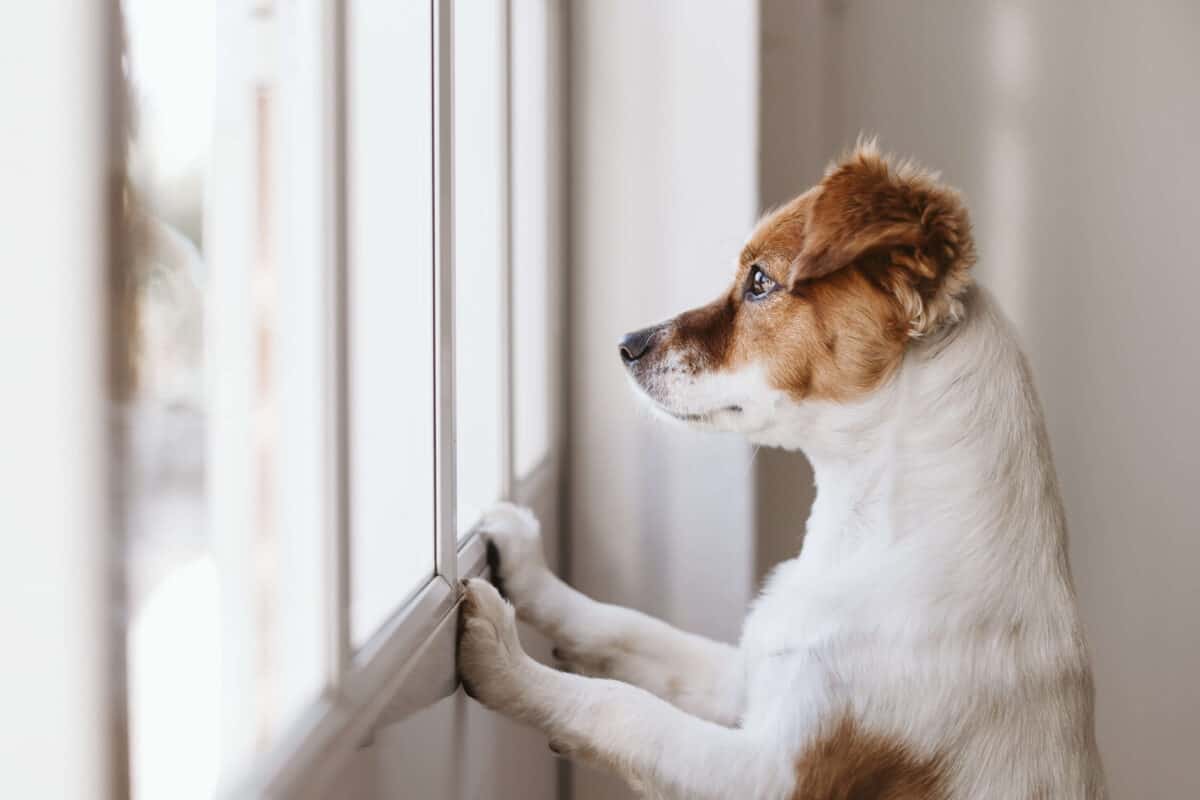Preventing Separation Anxiety as We Return to Work

For many of our dogs, the past few months have been a blessing. They’ve had their people home all day. Every day. It is their dream come true. A dog’s heaven. And now we’re beginning to head back to work. A lot of dogs will feel this shift very strongly. After months of total togetherness, you are suddenly gone for 8-10 hours at a stretch again. It can be devastating for your dog (and for some of us as well).
We can minimize the stress of our re-entry to the world, and departure from our homes if we start now. Start re-acclimating your dogs now to having independent time. Start getting up and leaving your house at your normal work schedule. Go for a drive or a walk – without the dog. Do a grocery run. The first time you do this, you may only leave for 10-20 minutes and then come home. Engage in your normal come-home rituals. If you normally ask your dog to get a toy, do this. If you walk right past your dog so you can take your shoes off and put your stuff down, do that before engaging the dogs. If your normal routine is to drop to your knees and love on your pet the moment you walk in the door, I’d encourage a slightly less exciting return. Acknowledge your dog. Greet and allow a brief sniff and then do something else for a minute before having that love-fest.
If you normally crate your pup when you’re out, make sure you crate during these practice outings. I also encourage doing some practice crating while you’re home and doing other things like taking a shower or watching a movie. Provide a chew activity for your pup while she’s crated – a food-stuffed Kong or long lasting chew. This can be an important piece to the puzzle because chewing is a self-soothing behavior for dogs and can help them feel better if they’re experiencing some stress with this change of routine.
Build up how long you’re out in a given stretch. You don’t need to find a way to be out for 8-10 hours if you’re not back at work. But do build up to 1-2 hours at least. And then do that 2-4 times per day as your lifestyle and ability permit. This way you’re gone for chunks of time, but then return to check in before you leave again.
If you have a nanny-cam, use it while you’re out so you can check on your pups and make sure they’re not panicking in your absence. If they are panicking, come home and have a very low-key reunion. The next time you go out, go out for a much shorter period of time. And perhaps provide a food-stuffed Kong or other long lasting chew, or scatter some kibble and treats around their main living room for the dog to find while you’re gone. Sniffing is another species normal, and very self-soothing behavior so providing sniff opportunities may help your dog feel less stressed while you’re gone. You may also leave the radio or TV on a classical or soft jazz music channel (or play Through a Dog’s Ear on continuous loop), or a news channel where the talking will be relatively monotone and not overly exciting.
Taking your time to build from just 10- to 20-minute outings up to 2-hour outings a couple times per day will help your furry family reacclimate to being unattended during the workday. It will also help you get used to being without your companion. I know I will miss having my boys next to me all day when I go back to work. So think of this as practice for both of you.
Author - Jody Epstein
Jody Epstein is a certified behavior consultant, certified professional dog trainer, and holds a master’s degree in animal behavior from Tufts University. She has been training professionally for more than 12 years and is pleased to be part of the Academy of Pet Careers team, teaching the next generation of trainers. Look out for her blogs on all things dog training and animal behavior.

